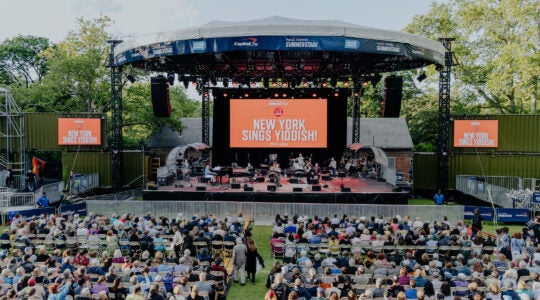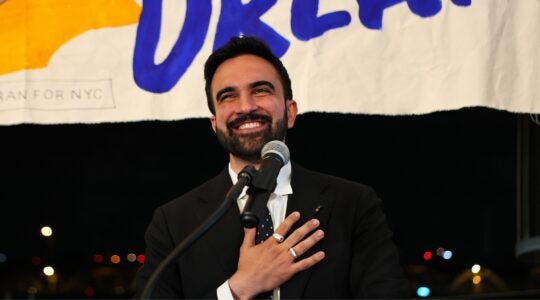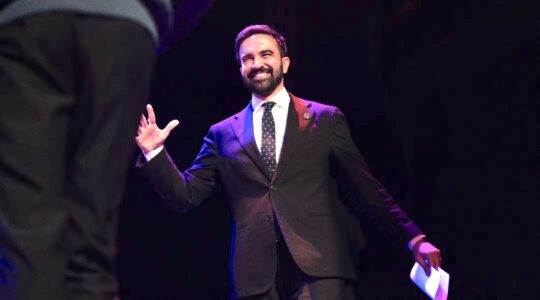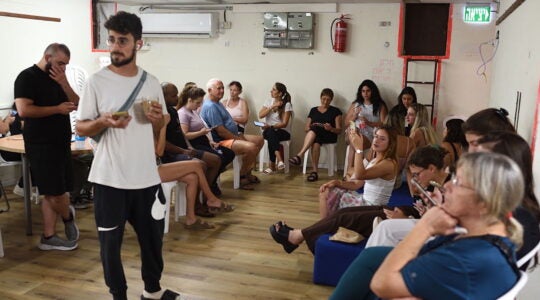When Ilana Ruskay-Kidd was working as director of JCC Manhattan’s nursery school, she kept running into the same complaint from parents.
“I was hearing the same story over and over again: that families who were in Jewish schools whose kids had challenges, their needs were being unmet,” she said. “I kept hearing both that they left with broken hearts when they had to leave these schools and that when their child was in the right place, their lives changed.”
And she wondered: “What’s happening in these other schools that’s working and why are we in the Jewish community not there to welcome them? I just felt like it was time for the Jewish community to step up,” she said.
With the “If not us then who?” mindset, Ruskay-Kidd decided to take on the challenge. Two years later, in 2014, she opened The Shefa School, a pluralistic day school for students with language-based learning disabilities (LBLD), such as dyslexia and problems with auditory processing. The name, which translates to abundance, refers both to the many strengths of Shefa students, and also to suggest that the Jewish community has enough resources to help support a school that serves students with learning disabilities.
Initially operating out of five classrooms in Lincoln Square Synagogue with 24 students, the school grew quickly, doubling enrollment the following year, and moving to a larger space with 82 students in September 2016. Next fall, the school, now located on East 29th Street between Park and Madison, will have 110 students.
“There’s demand,” Ruskay-Kidd said. Students travel up to 90 minutes each way, coming from as far away as the Five Towns and Rockland County.
“For these families, giving their kids both a proper education where they’re going to be well served and also giving them a Jewish education is just really primary,” she said. “And so they’ve been willing to make all kinds of adjustments to be able to make it here.”
Mr. Schwartz, who asked that we only use his last name to protect his son’s privacy, chose to send his son to Shefa, even though the commute from their Westchester home clocks in at well over an hour.
Well worth it, he said.
When Schwartz’s son started at Shefa, the third grader thought it was because he was “a stupid boy” who had to “go to a school for stupid kids,” Schwartz said. “That’s pretty painful to hear.” But after the first week, his son said he felt like “Superman.”
“He could do everything that was being asked of him at school — things were explained to him in ways that he could understand,” he said.
Three years later, Schwartz says, “He can read The New York Times, he writes beautifully, he knows how to cope with his dyslexia. And in the process they rebuilt his self-esteem,” he said.
“I think what’s hard for many of our kids before they come to Shefa is that they are just as bright as the kids [sitting] next to them,” Ruskay-Kidd said. “They’re socially aware, and they’re working much harder to do something that their friends are not working that hard to do, and I think that it is extremely frustrating and perplexing — and over time, demoralizing.”
Between 15 and 20 percent of American children have an LBLD. Luckily, Ruskay-Kidd said, “there’s a good model on how to serve them.”
The model starts with small classes — 11 to 13 kids with two teachers for homeroom, groups of 2 to 6 for reading and math. It also includes more time for language-based subjects: Reading classes last for 80 minutes, writing for 45.
“Our students need more time on task. Some kids, you can put them in Central Park for the day and they will learn to read. Our kids are not in that category. Our kids need much more explicit direction, much more expertise,” Ruskay-Kidd said.
For example, she said, “If our teachers ask a question, rather than just picking the kid whose hand goes up first, if you just have five seconds of wait time, you’ll see that other students’ hands go up,” Ruskay-Kidd said. “Those types of strategies can make a tremendous difference.”
During a visit to the school on a recent Friday morning, Nina Levi, who teaches fourth and fifth graders, explained how she uses movement in her teaching. For spelling, she uses “sky writing,” where students write the word in the air several times. “It creates muscle memory,” she said. During a lesson on trade during the colonization of South Africa, students chanted “import in,” pulling their arms in, then said, “exit means to leave,” with a clap, and then “export out,” pushing away.
In math, Levi uses a lot of “manipulatives.” For fractions, she might give a student six plastic tiles, each representing one-eighth, and ask her to find the lowest common denominator. The student would line up the one-eighth tiles and then see what size fraction, one-third or one-quarter, can be lined up to the same length. She’ll find that the one-third tiles don’t match up, but that three one-quarter tiles do.
Down the hall, a teacher sits with a handful of second-graders playing Rack-O, a game in which players draw and discard cards until they have a rack of 10 cards in numerical order. The vibe is cooperative; students work in pairs and offer help to other groups.
The ground floor smells like challah, which students bake every Friday.
Downstairs in the middle school, a group of about 10 students are energetically discussing the novel “Holes,” while next door, a teacher is discussing the gender gap in Congress.
“Does anything seem strange about this number: 104 out of 535?” the teacher asks.
“There are a couple hundred men, but not really a lot of women,” a student answers.
“It’s like a fifth,” another student adds.
Leaving the room, Ruskay-Kidd points out that while the concept of the lesson — gender discrimination — is at grade level, the reading is short, less than half a page.
Shefa students, she said, “they’re able to wrestle with high-level material, it’s just going to be given to them in a different way. And so we’re always going to be working to make sure the level of what we’re teaching is high-level and engaging.”
Shefa serves grades 1-7 with plans to grow to K-8. Ruskay-Kidd expects most students to go to a mainstream high school, having learned techniques to deal effectively with their LBLDs.
Jacqueline Sharp-Linsenbaum decided to send her 7-year-old son to Shefa when she realized that he wasn’t going to learn those techniques at his mainstream day school.
“The Jewish day schools are not equipped,” she said. “No one’s looking for that label of special education; that’s a hard label to digest,” she said. But, she said, “If my kids have the ability in them to go, for example, to an Ivy League school, sitting at a mainstream school will not give them the tools to get there. At a school like Shefa, you get the tools that if you have the potential to go it will give you the boost to be able to get there.”
Alisa Boymelgreen sent her 8-year-old son to Shefa after trying him at Luria Academy of Brooklyn and the Ideal School in Manhattan. Although both schools provide a lot of support for kids with learning disabilities, “It became clear that they weren’t able to give him as much support as he needed,” she said.
Boymelgreen and her husband, Sam, are two of the original founders of Luria. “It was a big shock to me to realize, and kind of heartbreaking to realize, that what we started couldn’t accommodate him,” she said. “But ultimately he’s got to be in a place where the learning is pitched for him.”
She, like the other parents interviewed, was glad to be able to send her son to a school designed for children with a LBLD that also taught Judaics.
“He loves it,” she said. He comes home and talks about what he has learned, about Tu b’Shvat, the difference between Midrash and Tanach.
“Before Shefa you had to make a choice,” said Rifki Zable, whose daughter switched to Shefa in the second grade. “Shefa really opened up a door where she could be taught in the right way but also not miss out on the Judaic content and the Jewish environment and emphasis on Israel that was important to us.”
Now, Zable said, her daughter is more outgoing and confident. Her reading is better, but more importantly, “her attitude towards it is very different. She’s not afraid. She’s not hesitant to try.”
When she thinks of the impact the school has had, in such a short period of time, Zable said she’s “blown away.”
“These are 80 kids who would have otherwise been miserable in school. When a kid is miserable in school it reverberates through the family,” she said. Every person connected to the school, she mused, “is a different person than who they were before they came to Shefa, because Shefa exists. That the school has that power to do that is really, to me, amazing.”
Ruskay-Kidd is thinking about the kids that aren’t able to go to Shefa.
“We’re very aware that there are other populations we’re not serving,” she said. “My hope is that … some other person [or] the Jewish day schools that exist will take on that mantle.
“It takes imagination, it takes resources.” But, she said, “there is enough abundance in our community to make this happen.”
The New York Jewish Week brings you the stories behind the headlines, keeping you connected to Jewish life in New York. Help sustain the reporting you trust by donating today.




